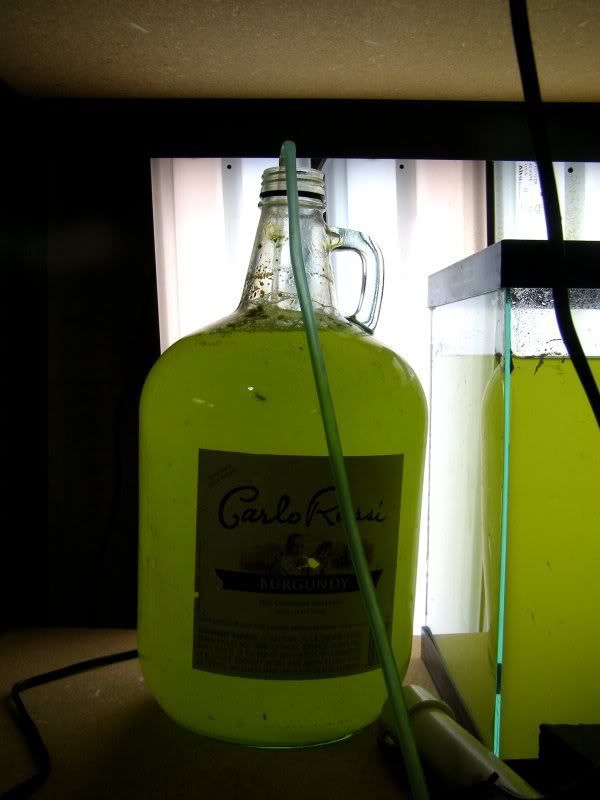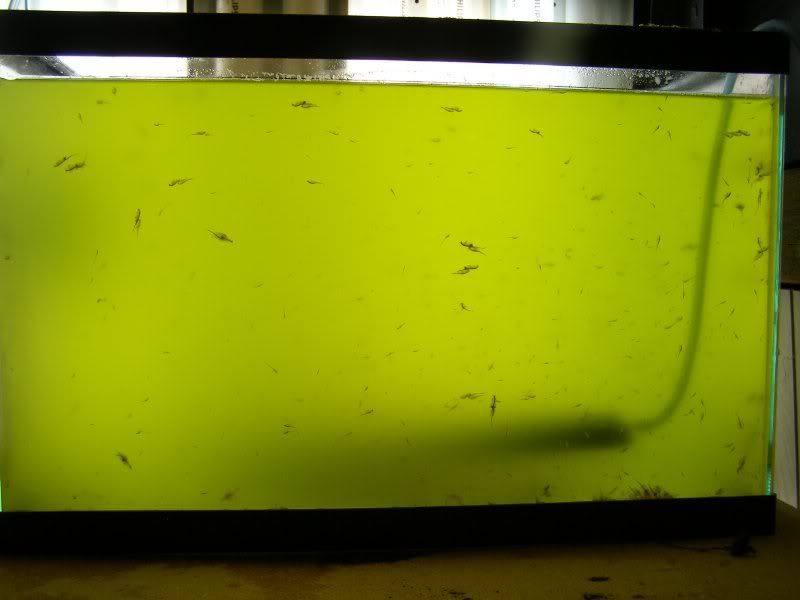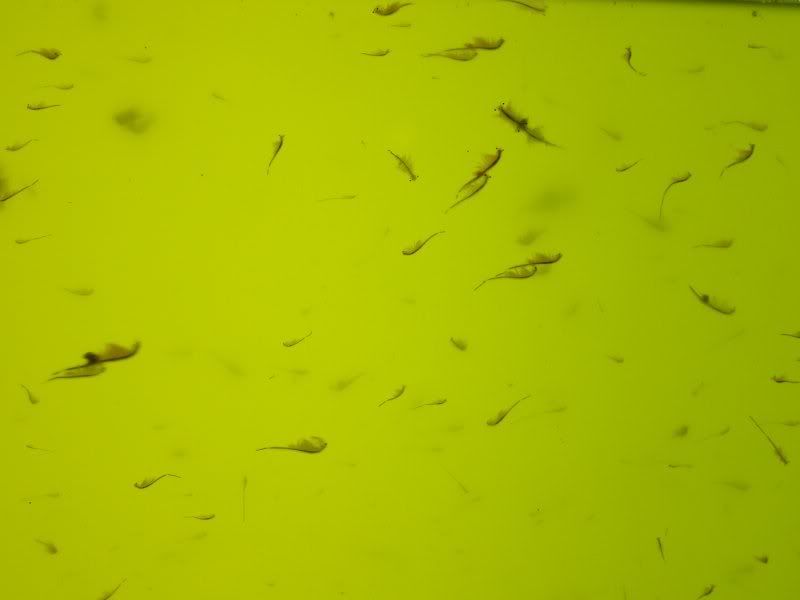Page 1 of 1
culturing toxic marine micro-algae?
Posted: Thu Nov 29, 2007 5:27 pm
by Baby_Girl
I am planning on setting up a couple brackish/SW tanks for opae ula and Amano larvae. At the same time, I was interested in culturing some marine green water for the larvae to eat. I assumed the process would be the same as it is for FW green water: add old tank water, set in sunlight or have lights on 24/7, add ammonia and start culturing!
However, after doing some research, it seems that this method is not a good idea with saltwater because of the potential to culture toxic micro-algae. I'm thinking it's as if we accidentally grew the dinoflagellates that are responsible for red tide. Hence, it is recommended to start with an innoculated strain that contains only known, beneficial phytoplankton.
I'm going by sites such as
http://www.garf.org/news13p2.html
and
http://www.advancedaquarist.com/issues/ ... reeder.htm
Has anyone else come across this information? Has anyone cultured marine green algae on their own without a starter culture, and what were the results?
Posted: Thu Nov 29, 2007 5:37 pm
by badflash
I've cultured marine green water for several years now. I use it for my brine shrimp. The process is pretty simple. I mix up some salt water from any of the leading salt mixes with R/O water, add 1 ml of parts A & B of pro-culture to a gallon of mix and add some starter tetraselmis. I use 1 gallon light green wine jugs and an open line air bubbler to keep the mix moving. I light it with daylight bulbs 18/6.

Posted: Thu Nov 29, 2007 6:49 pm
by Baby_Girl
So maintaining the marine green water is not too difficult? Just an air bubbler, light, and what else do they need (besides saltwater)? Do you need to feed them?
I guess I was off-put by the initial cost of the starter culture. But if it's going to be easy to keep, it will be worth the cost.
Do you ever worry that a bad strain might contaminate your cultures? Like I assume the source of the 'bad' microalgae in the DIY method is just the water, air, soil and whatever you bring in on your clothes.
Posted: Fri Nov 30, 2007 6:56 am
by badflash
I've had the same culture going for well over a year. In one tank I do almost nothing. The only feed it gets is Kent Pro-Culture. You do need to sample for phosphates before you add this to your tank if you have animals that are sensitive to that. I wait until the culture starts to turn a little yellow, then harvest 1/2, add more water and more pro-culture. That takes about a week.
My understanding (though quite limited) is that green algaes are not toxic. If your culture turns red, I'd dump it. It might be a problem if I were closer to the ocean, but I can't say. The closest salt water is probably 50 miles from here.
I have a brine shrimp tank that has been going since last December. It provides adult brine shrimp when I want and it is powered by 1 cc of Pro-Culture parts A&B every 2 weeks. The brine shrimp produce live naupli, so I don't need to ever add more eggs.



Posted: Fri Nov 30, 2007 9:52 am
by Neonshrimp
Thanks for sharing your method. Nice close up pictures.
Posted: Fri Nov 30, 2007 5:00 pm
by Baby_Girl
badflash wrote:The brine shrimp produce live naupli, so I don't need to ever add more eggs.
that's cool! A self-sustaining brine shrimp colony is not something I've heard of before. But then I'm not up-to-date on the marine tank hobby.
Unfortunately, I DO live right by the ocean. In fact, I come home crusted with marine mud and stinky water some days. And we do indeed get red tide outbreaks occasionally, so I'd probably have to be extra careful.
If the culture turns red, it would be pretty obvious that something was wrong. I'm pretty sure, though, that a previously innocuous phytoplankton species can suddenly turn virulent following some external cue that researchers haven't identified yet. The commercially-available starter cultures, of course, do not have this problem.
After thinking about it, and the possibility of contamination from my person, I don't know if I want to undertake this. I think I'll just use dead phytoplankton, along with salt-acclimated MTS to eat the leftovers, and Chaetomorph or Ulva macroalgae to absorb the excess nutrients produced from uneaten food.



